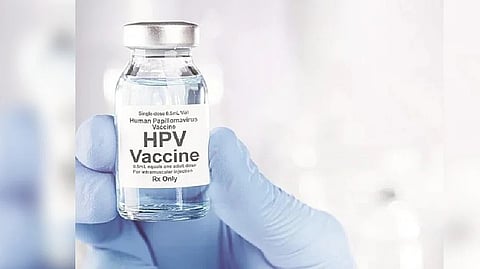

CHENNAI: Cervical cancer is preventable with high-risk human papillomavirus (HPV) vaccination as well as screening, diagnosis and treatment of pre-invasive lesions.
However, approximately 5,70,000 people are diagnosed and 3,11,000 people die of cervical cancer annually. Nearly 90 per cent of cervical cancer deaths occur in low, middle income countries (LMIC).
Doctors say that improving HPV vaccination rates through carefully designed and funded programmes should be prioritised as a strategy to reduce cervical cancer incidence in LMIC. The gold standard for the diagnosis of both cervical dysplasia and invasive cancer is the histopathologic examination of biopsied specimens to identify premalignant and malignant conditions of the cervix.
Dr Ayyappan, surgical oncology, Apollo Cancer Center, says that in high-resource settings, the standard of care for cervical cancer screening, includes cervical cytology and/or high-risk HPV DNA or RNA testing, as most of the cervical cancer is caused by infection with HPV.
“Innovations in digital cytology and HPV testing could increase access to standard-of-care practices in low-resource settings, although the technical complexity, infrastructure requirements and cost are significant barriers. Newer optical technologies may allow for automated visual evaluation, reducing the need for extensively trained personnel and therefore more easily scaling in low-resource settings,” he said.
He added that technologies for the self-collection of cervical samples have previously been reviewed and self-sampling could help remove barriers to HPV screening.
“Current limitations in HPV DNA tests include high per-test cost, instrumentation cost, infrastructure requirements and complexity of use,” experts say. Vaccination of adolescent girls is the most effective long-term intervention for reducing the risk of developing cervical cancer. Current WHO guidelines recommend two vaccine doses for young adolescent girls between 9 and 14 years of age.
Visit news.dtnext.in to explore our interactive epaper!
Download the DT Next app for more exciting features!
Click here for iOS
Click here for Android